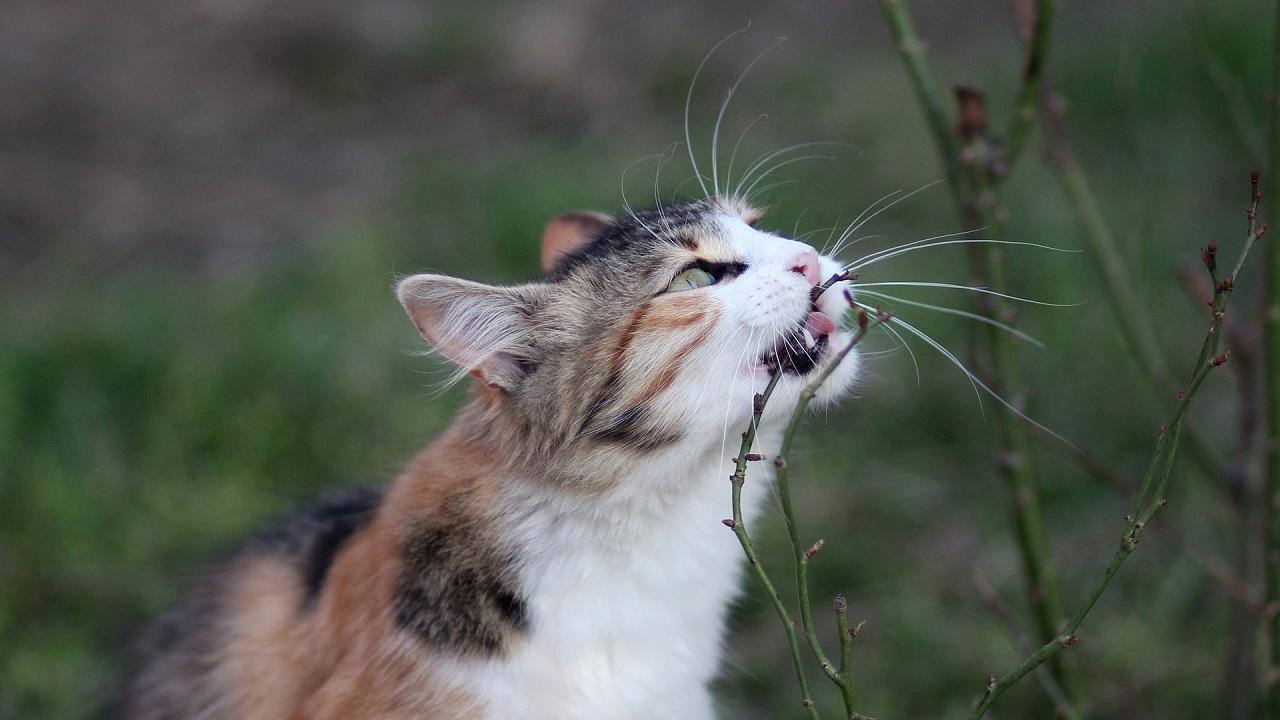
Abnormal Eating Habits in Cats
Abnormal Eating Habits in Cats
How we can help
Call 530-752-1393 to schedule an appointment with the Behavior Service.
Some animals develop unusual eating habits, consuming objects such as rocks, wood, plastic, strings, rubber bands, and other non-food items. This problem, called pica, is defined as the persistent chewing and consumption of non-nutritional substances that provide no physical benefit to the animal. While many cats chew on a variety of objects, only a subset actually consumes the objects. This behavior can be a symptom of an underlying medical problem, such as nutritional deficiencies, or behavioral problem, such as anxiety, boredom, or true compulsive behavior. Pica can lead to medical problems including poisoning, dental problems, and gastrointestinal obstructions.
Causes
Nutritional deficiency or other medical problem
It is important to rule out an underlying medical problem as the cause of pica. For example, some animals eat soil when they have mineral deficiencies.
Boredom/Lack of enrichment
When not provided with adequate exercise, mental stimulation, interactive toys, and/or social interaction, cats seek out their own activities and toys.
Anxiety
Cats that are anxious, such as those suffering from separation anxiety, may redirect their stress to abnormal eating behaviors. For example, some cats have been reported to initiate pica upon the introduction of new animals to the house.
Early weaning
Cats that are weaned early may develop nonnutritive suckling of their littermates and/or inanimate objects.
Compulsive disorder
Some animals have a true compulsive disorder. Oriental cats, such as the Siamese and Burmese, have a propensity for eating and sucking on wool or other fabrics. The behavior begins around one year of age and there may be a genetic link.
Treatment
Seek veterinary help
Talk to your veterinarian if you have concerns about your pet’s nutritional needs and abnormal eating habits. If your pet’s behavior stems from a nutritional deficiency, it is important to choose a commercial diet that will provide complete nutrition. Ask your veterinarian for a close nutritional analysis and advice on good commercial diets.
Avoidance
This technique involves removing the animal from the environment where the behavior is performed. Placing your cat in a room free of potential temptations while she is alone will prevent the behavior from occurring. However, these techniques by themselves don’t address the underlying problem.
Address the underlying cause of anxiety or stress
In some cases, the abnormal consumption of nonfood objects may stem from an underlying stress or anxiety. Trying to determine the cause of your pet’s angst is an important step in eliminating the behavior. To determine the source, careful observation of the behavior, including its frequency, duration, and time of occurrence are important. In many cases, the behavior may occur only while the animal is not under your supervision. In this instance, a video camera may be used to capture the act. Understanding the circumstances in which your pet feels driven to perform the behavior is important to work towards elimination.
Another important point to keep in mind is how you interact with your pet on a daily basis. Setting proper boundaries helps your pet respect you as the leader. Being conscientious about the use of rewards when interacting with your pet is important to let your pet know that he must be behaving properly and actively participating in maintaining proper behavior to gain attention and rewards from you.
Enrichment
You can help reduce this behavior by increasing environmental enrichment. Giving your pet toys that are breed and size appropriate may decrease unwanted behavior by increasing positive stimuli. Redirecting your pet’s energy towards an acceptable outlet is a good alternative.
Exercise
With our busy lives, it can be hard to find time to help our pets get sufficient exercise. However, a physical outlet can be an excellent alternative to reduce abnormal eating habits by increasing the level of neurotransmitters that support healthy brain function.
Counter-conditioning and Remote Punishment
This technique involves retraining an animal to avoid certain behaviors that they previously sought. Placing a discouraging taste or smell on the object of desire will help them avoid eating that object in the future. For example, you can put hot sauce on the object that you want your pet to avoid. Alternatively, association of a negative stimulus, such as turning on a vacuum cleaner at time of the pica, can lead to stopping the behavior. However, these techniques by themselves will not address the underlying problem.
Medication
As an adjunct to behavior therapy, medication MAY be used to reduce anxiety if the pica is induced by stress.
Pica is a complex behavior with many possible underlying causes. Remember to always seek professional advice from your veterinarian when determining the cause of your pet’s motivations.
*This article may not be reproduced without the written consent of the UC Davis School of Veterinary Medicine.
